Emilio Pucci's fashion journey began in 1947 after his aristocratic upbringing in Naples. His vibrant ski outfits caught eyes in Harper's Bazaar, leading to the launch of his fashion house. By 1950, Pucci opened a boutique in Capri, known for bold prints inspired by Mediterranean landscapes. He pioneered fabrics like stretch silk and lightweight jersey, offering stylish yet comfortable options for women. His designs attracted icons like Marilyn Monroe and Jackie Kennedy. After Emilio's passing, his daughter preserved his vision, keeping the brand alive and thriving. Curious to uncover how his legacy transformed fashion? You might find the next chapter intriguing.
Emilio Pucci's Early Life
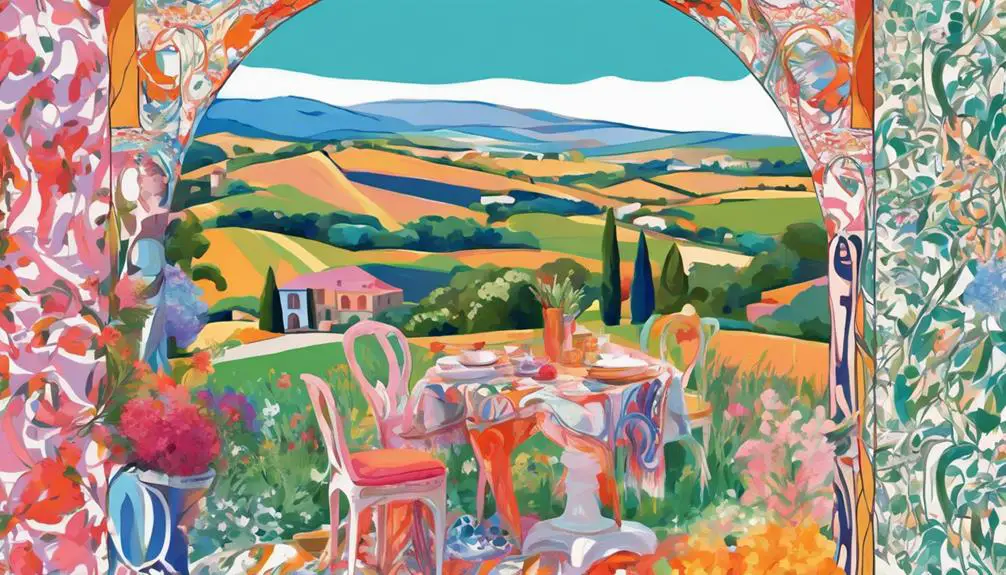
Growing up in Naples, Italy, Emilio Pucci was immersed in an aristocratic environment that nurtured his rich cultural heritage. Born into a distinguished family in 1914, he'd access to a world that celebrated art, fashion, and nature. His early experiences in this vibrant setting shaped his aesthetic sensibility, drawing inspiration from the natural landscapes surrounding Naples.
At just 17, Emilio made a mark as a member of the Italian national ski team, competing in the 1936 Berlin Winter Olympics. This experience not only showcased his athletic talent but also introduced him to the world of high fashion.
Emilio pursued his education at Reed College in Oregon, where he graduated with a Master's degree in Social Science in 1937. This academic background equipped him with a unique perspective on society, which would later influence his designs.
His journey took a turn during World War II when he served as a Pilot Lieutenant in the Italian Air Force. The experiences he gained during the war further shaped his vision and design approach.
In 1947, Emilio Pucci initiated his fashion career, creating a vibrant ski outfit that caught the attention of Harper's Bazaar USA. This marked the beginning of his rise in the fashion world, where his aristocratic roots and diverse experiences came together to form a distinct style.
Emilio's early life set the foundation for his future successes, blending elegance, adventure, and creativity into every piece he designed.
The Birth of Pucci Fashion
In 1947, Emilio Pucci launched his fashion house, quickly capturing attention with his groundbreaking ski outfits for the Italian national team. His first design appeared in Harper's Bazaar USA, marking a pivotal moment that shifted him from sportswear to the broader world of fashion. This was just the beginning of what would become a vibrant career.
By 1950, Pucci opened his first boutique in Capri, a stunning backdrop that perfectly matched his unique aesthetic. His designs were renowned for their vibrant colors and graphic prints, drawing inspiration from the breathtaking Mediterranean landscapes and exotic cultures surrounding him. Each piece was a celebration of life, reflecting the sunny, carefree spirit of resort wear.
What set Emilio Pucci apart was his signature style, characterized by sensual, free-flowing lines that flattered feminine curves. He didn't just create clothing; he crafted experiences through fabric. This innovation earned him the title "The Prince of Prints," a fitting tribute to his ability to transform simple textiles into works of art.
With every collection, Pucci pushed fashion boundaries, blending comfort with high style. His designs resonated with women seeking both elegance and ease, making them a staple in wardrobes around the globe.
The birth of Pucci fashion was more than a business venture—it was a vibrant revolution that captured hearts and set new standards in the fashion world.
Signature Styles and Innovations
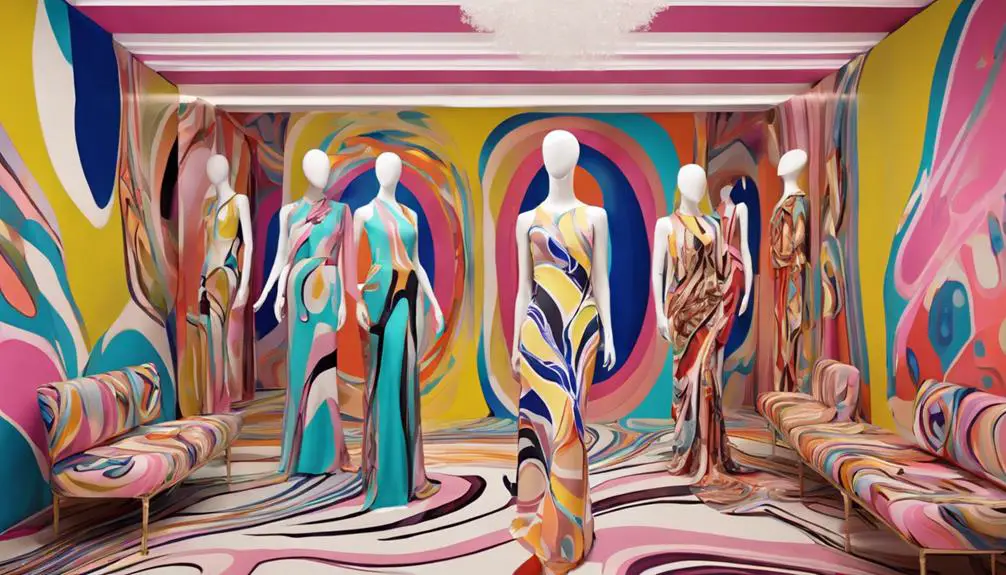
Emilio Pucci's signature styles and innovations reshaped women's fashion in the mid-20th century. With a keen eye for color and form, his designs revolutionized the way women dressed. You'd find that Pucci pioneered the use of stretch silk and cotton jersey fabrics to create lightweight garments that weren't only wrinkle-proof but also incredibly comfortable. This innovation meant you could look chic without sacrificing ease.
His signature style featured sensual, free-flowing lines that accentuated feminine curves, making movement a central theme in his creations. Imagine slipping into elegant clothing that feels as good as it looks!
Pucci's bold prints and graphic patterns drew inspiration from his travels and the stunning landscapes of Italy, resulting in around 200 new colors that brought vibrancy to women's fashion. He earned the nickname "The Prince of Prints" for a reason—his innovative designs transformed the fashion landscape, making bold statements that still resonate today.
Iconic pieces like sarong skirts and pyjama trousers exemplify his blend of elegance and casual sophistication, catering to the modern woman's lifestyle. In a world that often prioritized rigidity, Pucci's designs offered a rejuvenating alternative, proving that fashion could be both stylish and functional.
If you want to embrace a piece of fashion history, consider adding Emilio Pucci designs to your wardrobe. You'll not only wear a garment but also a slice of a revolutionary era in women's fashion!
Iconic Collaborations and Achievements
Throughout his career, Emilio Pucci achieved numerous iconic collaborations that not only elevated his brand but also left a lasting mark on the fashion world. One of the pivotal moments came in the 1960s when Marilyn Monroe was photographed in his solid-colored garments. This exposure greatly boosted the brand's visibility and established Pucci as a name to watch in international fashion.
From 1965 to 1974, Pucci's distinctive prints were featured in the uniforms designed for Braniff Airways, making waves in the airline industry and setting new trends in travel attire. His versatility shone through again in 1971 when he collaborated with NASA to design the Apollo 15 mission patch, showcasing that his talents extended far beyond traditional fashion.
In the late 1970s, Pucci partnered with the Lincoln Division of Ford to create special edition luxury vehicles, like the Lincoln Continental Mark IV, that reflected his unique aesthetic and fashion sensibilities. High-profile figures, such as Jackie Kennedy and Sophia Loren, embraced Pucci's designs, further solidifying the brand's status among elite fashion circles.
These collaborations not only diversified Pucci's offerings but also contributed to a broader cultural conversation about style and identity. Each partnership underscored the innovative spirit of Emilio Pucci, demonstrating how his designs could transcend the boundaries of fashion and influence various aspects of modern life.
These achievements are integral to understanding Pucci's legacy and the imprint he left on the world of design.
The Legacy of Emilio Pucci
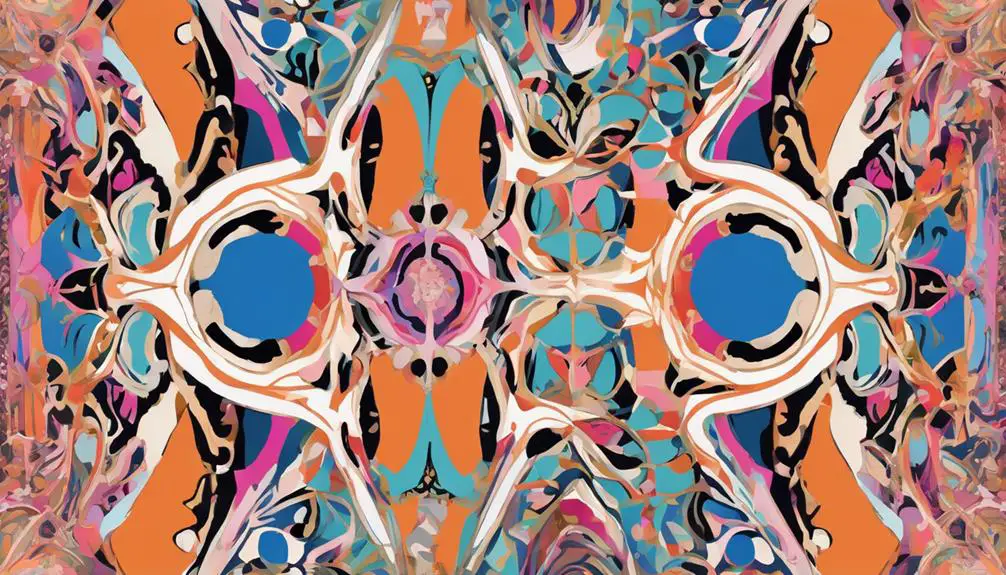
Iconic collaborations and achievements have paved the way for a lasting legacy that continues to shape the fashion landscape. Emilio Pucci, known as "The Prince of Prints," revolutionized women's fashion with his vibrant colors and graphic prints. This legacy isn't just about bold designs; it's a story of evolution, preservation, and modern interpretations.
Here are four key elements of Pucci's enduring impact:
- Heritage and Evolution: After Emilio's passing in 1992, his daughter, Laudomia Pucci, took charge. She dedicated herself to preserving the brand's heritage while allowing it to evolve.
- Revival through LVMH: In 2000, LVMH acquired a 67% stake in the brand, sparking a revival that expanded Pucci's global presence and appealed to a new generation of luxury consumers.
- Cultural Icon Status: Emilio's designs were embraced by iconic figures like Marilyn Monroe and Jacqueline Kennedy, embedding the brand in popular culture and fashion history.
- Commitment to Craftsmanship: Today, modern interpretations of Pucci's classic designs highlight the brand's commitment to innovation while staying true to its rich legacy of artistry and craftsmanship.
Pucci's vibrant colors and graphic prints continue to inspire designers and fashion enthusiasts alike. His legacy reminds us that great fashion is timeless, evolving yet rooted in creativity and passion.
As you explore this legacy, you'll see how Emilio Pucci's spirit remains alive in every stitch and swirl of fabric.
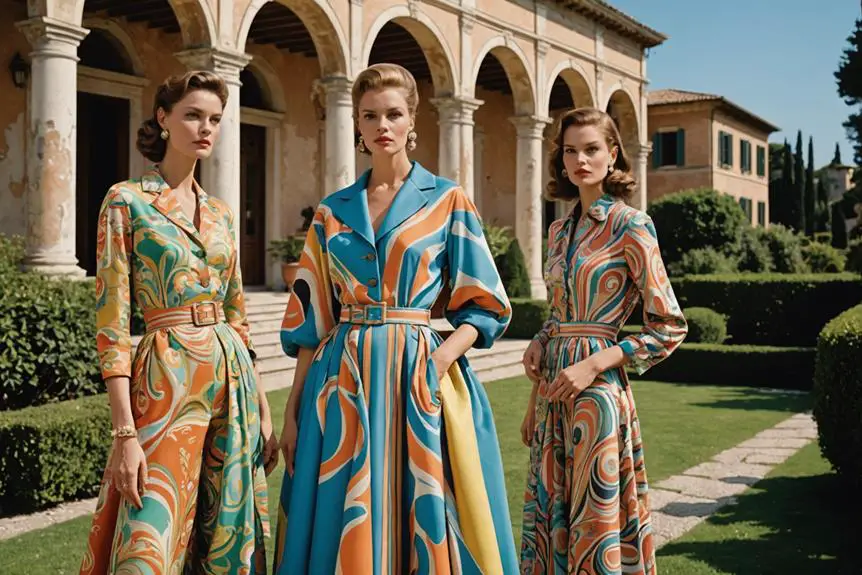

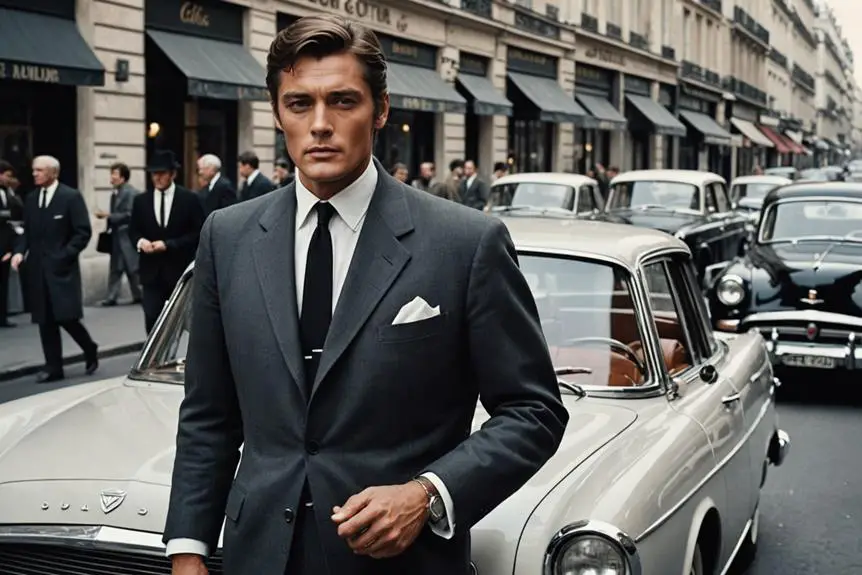

Excellent content… You’ve made some excellent observations.
Looking forward to more